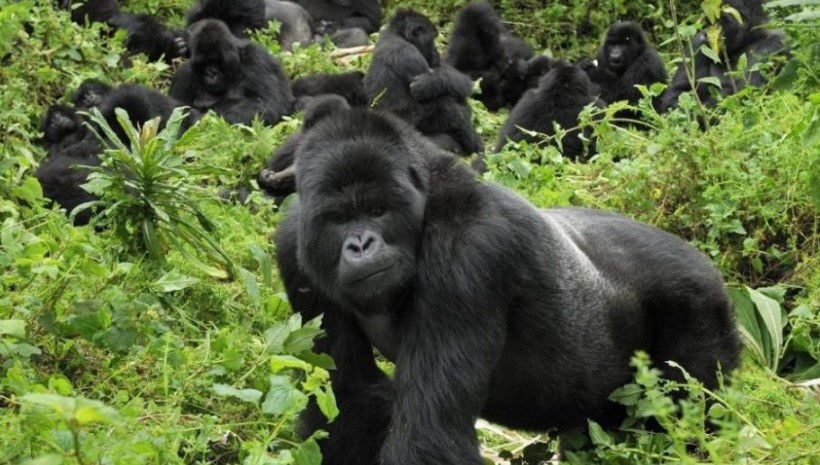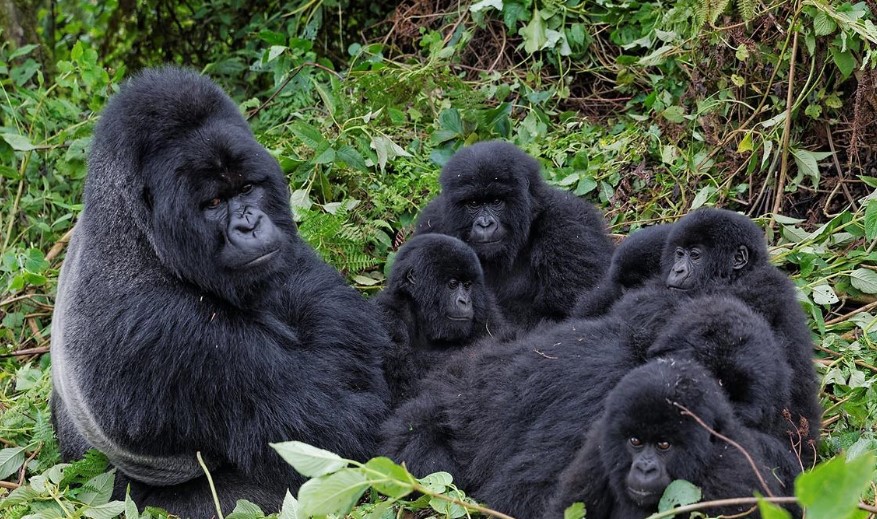Gorilla Families In Uganda-Uganda is home to some of the world’s most majestic and rare primates – gorillas. These gentle giants live in family groups, which are led by a dominant silverback male. These families play a crucial role in the survival of the species, and in this article, we will delve deeper into the world of gorilla families in Uganda.
There are two species of gorillas that are found in Uganda: the mountain gorillas and the eastern lowland gorillas. Mountain gorillas are found in the Bwindi Impenetrable Forest and the Mgahinga Gorilla National Park, while eastern lowland gorillas are found in the Kahuzi-Biega National Park in Congo.
Gorilla families in Uganda usually consist of around 10 individuals, with one dominant silverback male, several females, and their offspring. The silverback is the leader of the group, and his primary role is to protect and defend the family from any threats. He is also responsible for finding food and making sure that the group is safe and healthy.
The females in the group play a crucial role in the family’s survival. They are responsible for raising and caring for the young, and they also help to find food. Female gorillas will typically give birth to one baby every four to five years, and they will raise their young until they reach adolescence.
Gorilla families in Uganda have complex social structures and hierarchies. The dominant silverback is at the top of the hierarchy and is responsible for making all the decisions for the group. However, the other members of the family also have important roles to play. For example, the blackback males, who are young adult males, will sometimes challenge the silverback for dominance. If they are successful, they will become the new leader of the group.

Gorilla families in Uganda communicate with each other using a variety of vocalizations, facial expressions, and body language. These include grunts, roars, and chest-beating. Gorillas also use a range of nonverbal cues, such as raising their eyebrows, staring, and hunching their shoulders, to convey different emotions and intentions.
One of the most remarkable things about gorilla families in Uganda is their level of intelligence and emotional depth. Gorillas are highly intelligent animals, with complex social and emotional lives. They are capable of forming strong bonds with each other, and they show a range of emotions, including joy, sadness, and even grief. They have been observed comforting each other, playing, and even mourning the loss of a family member.
Unfortunately, gorilla families in Uganda are under threat from habitat loss, poaching, and disease. As human populations continue to grow and encroach on their habitat, gorillas are finding it increasingly difficult to find food and maintain their family structures. Additionally, poaching for bushmeat and the illegal wildlife trade is a major threat to their survival.
Conservation efforts are underway to protect gorilla families in Uganda. The Uganda Wildlife Authority (UWA) works to protect gorilla habitats, monitor gorilla populations, and enforce laws against poaching and illegal wildlife trade. There are also several ecotourism initiatives that allow visitors to observe gorilla families in their natural habitat. These initiatives provide a vital source of income for local communities and help to fund conservation efforts.
In conclusion, gorilla families in Uganda are a crucial part of the country’s natural heritage. They are intelligent, emotional, and highly social animals that play a vital role in the survival of the species. Conservation efforts are underway to protect them, but more needs to be done to ensure their long-term survival. By supporting ecotourism initiatives and working to protect their habitats, we can help to ensure that gorilla families in Uganda continue to thrive for generations to come.


Comment (0)